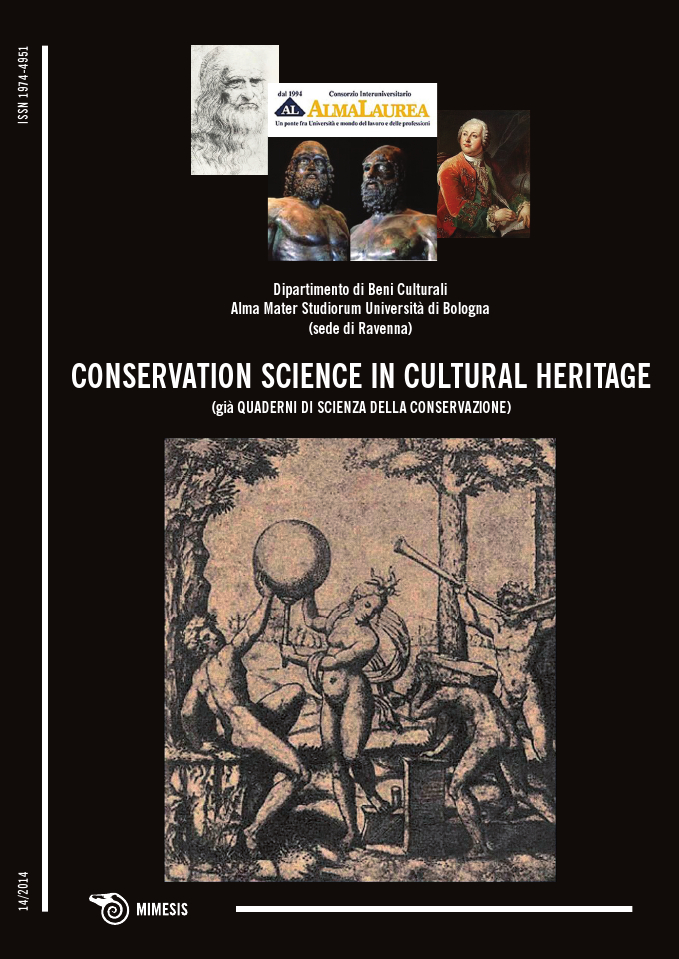“What is convenient” or art between economics and politics
DOI:
https://doi.org/10.6092/issn.1973-9494/4745Keywords:
art, science, university, eventsAbstract
Summary
Art, as a set of signs and techniques, has always been one of the most important modes of transfiguration in the world. It therefore has a political function: it is not a reproduction, but a questioning of reality. The new rhetorics of heritage and events, subject to speculative interests, risk minimizing, if not compromising the essential critical status of art and of scientific and humanistic research. The old conception of beauty as an ethical and political duty aimed at promoting the decus and ornamentum of the city, offers a third way to avoid the risks as much of the aesthetic sublimation of cultural heritage as of its commercial debasement.
Riassunto
L’arte, come insieme di segni e di tecniche, costituisce da sempre una delle più importanti modalità di trasfigurazione del mondo. Essa riveste pertanto una funzione politica: non è una riproduzione del reale ma una sua messa in discussione. Le nuove retoriche del patrimonio e dell’evento, subordinate a interessi speculativi, rischiano di banalizzare se non di compromettere lo statuto critico essenziale dell’arte e della ricerca scientifica e umanistica. L’antica concezione del bello come dovere etico-politico orientato a promuovere il decus e l’ornamentum della città offre una terza via per evitare i rischi tanto della sublimazione estetica quanto dello svilimento commerciale dei beni culturali.
Résumé
L’art, en tant qu’ensemble de signes et techniques, est depuis toujours l’une des principales modalités de transfiguration du monde. Sa fonction est donc politique: il ne s’agit pas d’une reproduction du réel, mais plutôt d’une mise en discussion de celui-ci. Les nouvelles rhétoriques du patrimoine et de l’événement, subordonnées à des intérêts spéculatifs, risquent de banaliser, voire de compromettre, le rôle critique essentiel de l’art et de la recherche scientifique et humaniste. L’ancienne conception du beau en tant que devoir éthique et politique de promotion du « decus » et de l’«ornamentum» de la ville configure une troisième voie permettant d’éviter à la fois les risques de la sublimation esthétique et ceux de l’avilissement mercantile des biens culturels.
Zusammenfassung
Kunst, als Gesamtheit von Zeichen und Techniken, stellt von jeher eine der bedeutendsten Verwandlungsformen der Welt dar. Aus diesem Grund hat sie eine politische Aufgabe: Sie ist keine Nachbildung der Wirklichkeit, sondern sie stellt diese in Frage. Die neue, spekulativen Interessen unterliegende Rhetorik über Bestand und Veranstaltungen läuft Gefahr, das kritische Wesen der Kunst und der wissenschaftlichen und humanistischen Forschung zu banalisieren oder gar zu beeinträchtigen. Das antike Verständnis von Schönheit als ethisch-politische Pflicht im Sinne der Förderung des Decus und des Ornamentum der Stadt stellt einen dritten Weg dar, um die Risiken sowohl der ästhetischen Sublimation als auch der entwürdigenden kommerziellen Nutzung von Kulturgütern zu vermeiden.
Resumen
El arte, considerado como conjunto de signos y técnicas, siempre ha constituido una de las formas más importantes de transfiguración del mundo. Reviste, por consiguiente, una función política: no es una reproducción de la realidad, sino un modo de ponerla en tela de juicio. Las nuevas retóricas del patrimonio y de los eventos, subordinadas a intereses especulativos, corren el riesgo de banalizar, o incluso menoscabar, la función crítica esencial del arte y de la investigación científica y humanística. La antigua noción de lo bello como deber ético-político orientada a impulsar el decus y el ornamentum de la ciudad ofrece una alternativa para obviar tanto el riesgo de la sublimación estética como el del desprecio comercial del patrimonio cultural.
简介
艺术,如同符号与技术的融合,它至始至终都是改变世界面貌的一个重要手段。因
此它同时具有政治功效:艺术不是现实的复制品,而是对现实的质疑。关于文化遗产与
事件的,从属于投机利益的新说辞,大事化小甚至危及艺术、科学与人类研究本身准
则。在古代,将以传播城市的美德与尊严作为伦理-政治上的义务视为美,它为避免在
审美升华和文化产品商业化贬值二者选择中的危险,提供了第三种选择。
Резюме
Искусство как совокупность образов и приемов испокон веков являлось одним из основных методов превращения мира. Поэтому, оно выполняет политическую функцию и не воспроизводит действительность, а подвергает ее обсуждению. Существует опасность того, что новая риторика о ценности и сопутствующих со-бытиях, будучи подчиненной спекулятивным интересам, банализирует и даже искажает основные критические принципы искусства и научно-гуманистических исследований. Античное понятие прекрасного в смысле этико-политической обя-занности, направленной на развитие красоты и украшения города, предлагает третий путь для предотвращения опасности как эстетического восхваления, так и коммерческого обесценивания объектов культурного наследия.
References
CANETTI, L., 2012, Impronte di gloria. Effigie e ornamento nell’Europa cristiana, Roma, Carocci
DAL LAGO, 2008, S. Giordano, Fuori cornice. L’arte oltre l’arte, Torino, Einaudi
GIUNTA, 2008, L’assedio del presente. Sulla rivoluzione culturale in corso, Bologna, il Mulino
Leone A., Maddalena P., Montanari T., Settis S., 2013, Costituzione incompiuta. Arte, paesaggio, ambiente, Torino, Einaudi
MONTANARI T., 2013, Le pietre e il popolo. Restituire ai cittadini l’arte e la storia delle città italiane, Roma, Minimum fax
MONTANARI T., 2011, A cosa serve Michelangelo?, Torino, Einaudi
NUSSBAUM M. C., 2011, Non per profitto. Perché le democrazie hanno bisogno della cultura umanistica, Bologna, il Mulino, (Not for Profit. Why Democracy Needs the Humanities, Princeton, Princeton U. P., 2010)
SETTIS S., 2010, Paesaggio, costituzione, cemento. La battaglia per l’ambiente contro il degrado civile, Torino, Einaudi
Downloads
Published
How to Cite
Issue
Section
License
Copyright (c) 2014 Luigi Canetti
Copyrights and publishing rights of all the texts on this journal belong to the respective authors without restrictions. Authors grant the journal right of first publication.
This journal is licensed under a Creative Commons Attribution 4.0 International License (full legal code).
See also our Open Access Policy.






